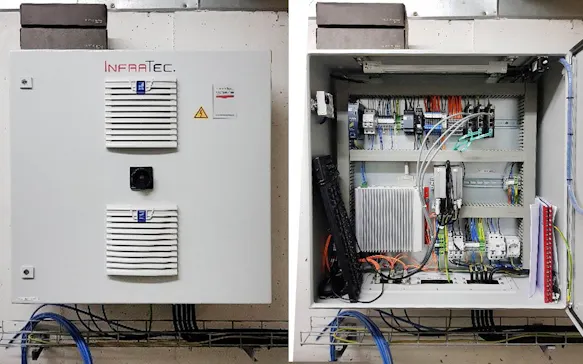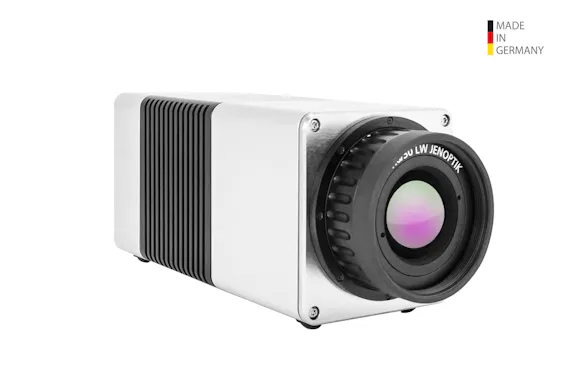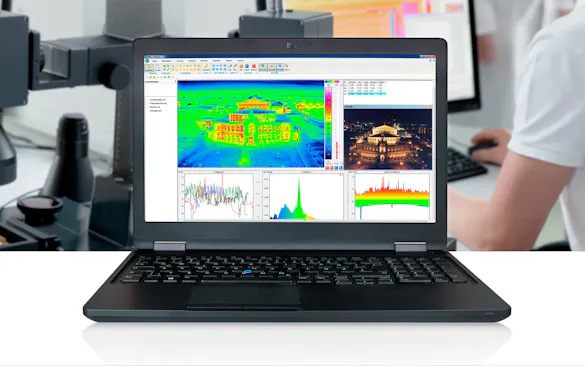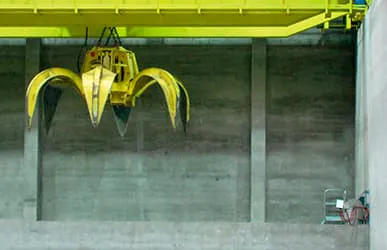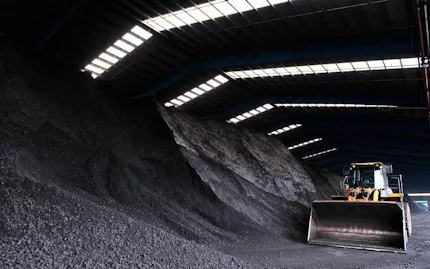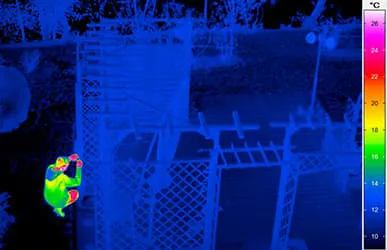WASTE-SCAN Against “Black Clouds”
Many tons of waste are bunkered and processed every day in waste recycling plants. It is not uncommon for this to contain highly flammable materials. If ignition sources get into this storage area, for example during delivery, there is an acute risk of fire. Therefore, waste incineration plants are subject to the strictest fire protection requirements in order to prevent endangering the environment and local residents. For this reason, an extremely important preventive measure is the permanent monitoring of the waste bunker and, if necessary, the surrounding areas.
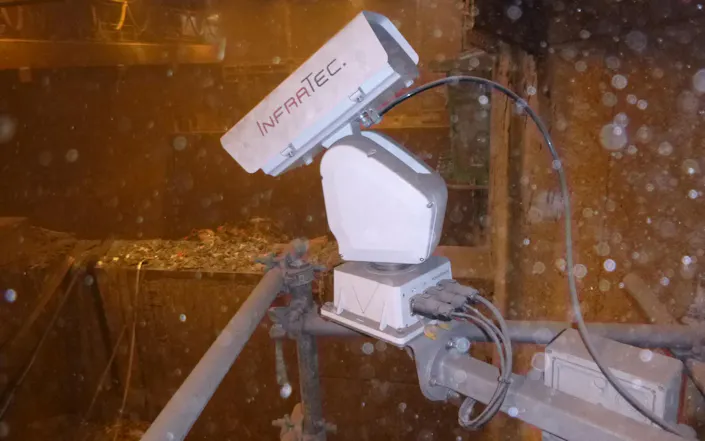
WASTE-SCAN, the early fire detection system from InfraTec, was designed for the special needs of the waste and energy industry. It monitors bunkers, warehouses and open spaces and is used for the automatic early detection of fires. In this way, the system also prevents the formation and spreading of air pollutants.
InfraTec Solution
Zweckverband Müllverwertung Schwandorf (ZMS)
Waste Incineration Plant
Thermography automation system:
WASTE-SCAN infrared monitoring system
The central control and evaluation unit (cabinet) processes the data from multiple industrial thermographic camera heads simultaneously in real time. The evaluated data and live thermographic images from the areas to be monitored are transmitted directly to the control room of the plant and to the crane cockpits. Thanks to the twin system, which consists of an infrared and a visual camera, suspicious areas detected by the infrared camera will be displayed directly in the visual image for easy localisation by the operator.
ZMS Waste Incineration Plant Schwandorf, Germany
Since 1982, the ZMS has been operating several waste transfer stations in Eastern Bavaria feeding the Waste to Energy (WtE) Plant in Schwandorf. The four installed furnace lines convert waste into steam and electricity for the surrounding industry and district heating for the city of Schwandorf. Thus, per year 450,000 tons of waste are processed, which substitute the equivalent of about 139 million liters of heating oil. It goes without saying that the plant complies with the waste-to-energy clean air act.
A waste bunker with a capacity of approx. 8,000 tons is available to ensure continuous and smooth operation with sufficient fuel supply.
The waste temporarily stored here represents the greatest fire load of the plant due to its quantity and composition. When implementing a corresponding safety concept – also in compliance with the fire insurer – a modern, automated fire and temperature detection adapted to the specific needs of the plant should be used in addition to the extensive extinguishing technology, which is already installed.
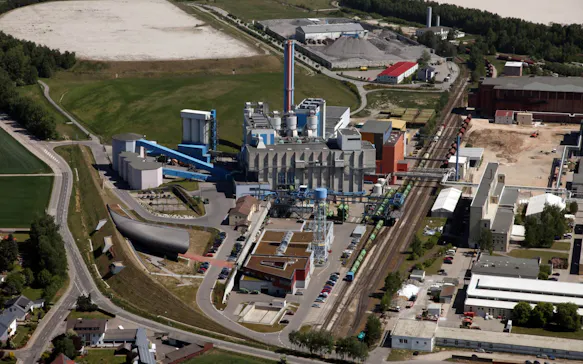
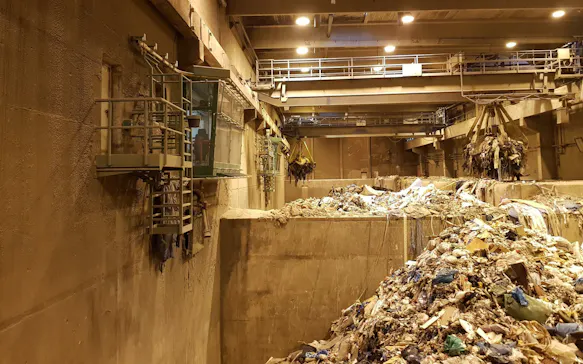
After researching the market and evaluating available solutions, ZMS decided to work with Dresden based InfraTec. The WASTE-SCAN and FIRE-SCAN systems from the specialist in thermographic measurement technology have been in use in the energy and recycling industry for over 20 years. The modularity of InfraTec`s WASTE-SCAN and FIRE-SCAN solutions allow a high degree of customization based on time-proven building blocks.
Introduction of WASTE-SCAN at ZMS
To determine the exact requirements, InfraTec specialists carried out an inspection to analyse the conditions on site.
In the subsequent pre-engineering process, the future locations of the twin camera heads (infrared and visual) were determined. Especially due to the sometimes poor accessibility of the potential sites, a significant amount of planning was required together with the owner of the plant. The waste delivery and stacking area was divided into three segments to be monitored. It was decided to use robust fibre optic transmission (Gigabit Ethernet) for the data network between the three camera heads and the control cabinet.
Planning of the electrical and control instrumentation as well as the determination of the alarming and visualisation system were also part of the pre-engineering process.
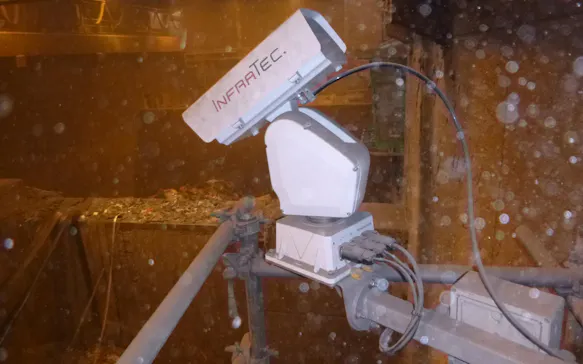
WASTE-SCAN: Used on Behalf of Safety
InfraTec consistently uses high-resolution industrial thermographic camera heads PIR uc LWIR with (640 x 480) IR pixels in every area of the waste bunker. This means that even the slightest thermal anomalies and pockets of fire can be detected at an early stage and a signal can be sent to the crane operator in order to start the extinguishing process or to take suitable measures if necessary. The thermographic camera itself is mounted in a robust protective housing with air purging for the camera lens and therefore works even under the most adverse environmental conditions, such as those in a waste bunker.
Full remote control of the cameras from the crane cockpit together with the overlay of the visual video stream allows the crane operator to quickly orient himself and to respond faster and more flexible. The additional parallel display in the control room contributes towards the aim to quickly identify hotspots.
In the WASTE-SCAN thermography automation software, the thermographic data from all sectors is recorded continuously and automatically checked according to pre-defined parameters. In addition to the overview display, it is also possible to retrieve temperature-time curves as well as maximum or average temperatures.
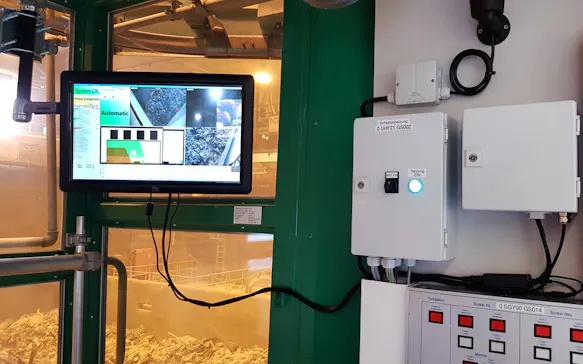
Live monitoring with full overlay precision takes place in merging mode (infrared and visual). The overall bunker situation is made visible “at a glance” by means of data-active, clear system visualisation. The WASTE-SCAN-Software developed by InfraTec ensures that the system components interact smoothly. Alerts in the event of thermal anomalies and the intuitive monitoring are organised based on clear rules.
The “brain” of the WASTE-SCAN system is the control cabinet with the integrated, fanless and low-maintenance industrial computer, which is protected in the electrical control room for the crane.
Thus, the automated WASTE-SCAN thermography monitoring system prevents uncontrolled "black clouds" in the sky of Eastern Bavaria.
